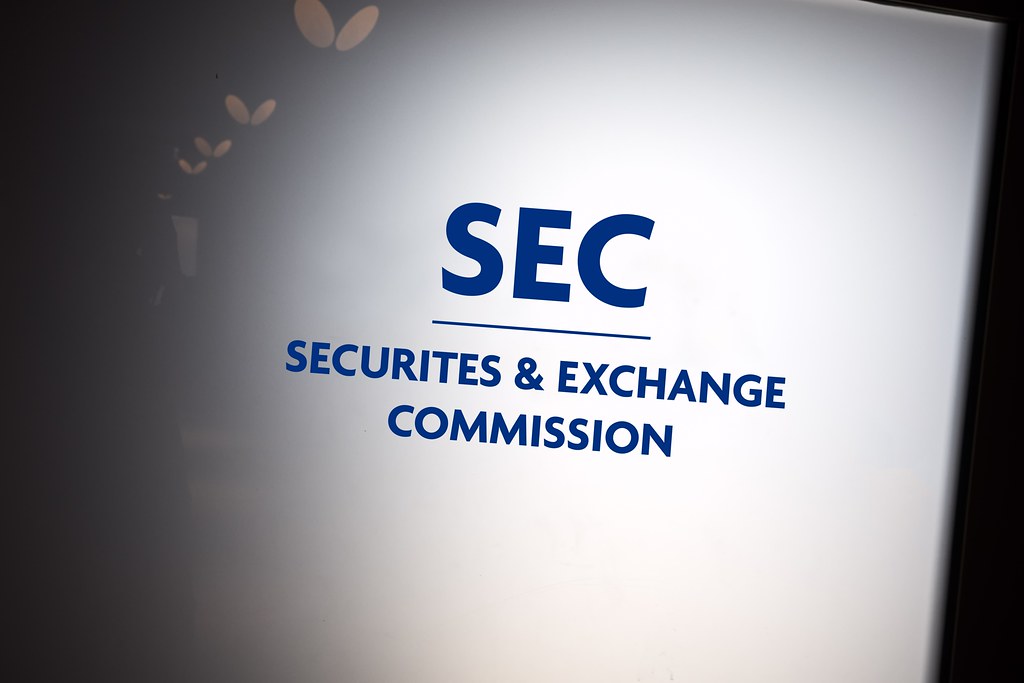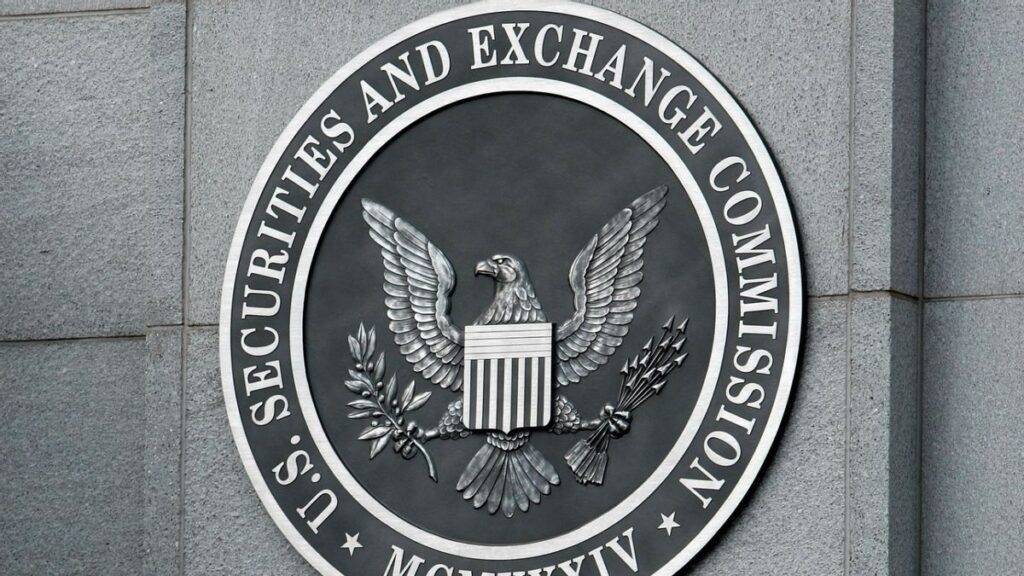Key Points:
- Increased Regulatory Oversight: The U.S. Securities and Exchange Commission (SEC) is intensifying its regulatory framework around cryptocurrencies, significantly impacting the industry.
- Drivers Behind Regulatory Tightening: Factors such as market growth, investor protection, and global regulatory trends are prompting the SEC’s enhanced focus.
- Implications for the Crypto Market: Stricter regulations may raise entry barriers, potentially stifle innovation, but also contribute to market stability and investor confidence.
- Balancing Act: Achieving a balance between robust regulation and fostering innovation is crucial for the sustainable growth of the cryptocurrency ecosystem.
SEC’s Regulatory Surge Sends Ripples Through the Crypto Industry
On January 26, 2025, the U.S. Securities and Exchange Commission (SEC) announced a significant tightening of regulations within the cryptocurrency sector. This move has sent shockwaves through an industry that has thrived in relatively unregulated environments. The SEC’s decision to bolster oversight and clamp down on fraudulent activities marks a pivotal moment, signaling a shift towards a more mature and regulated cryptocurrency market.
1. The SEC’s Intensified Regulatory Approach: A Game Changer for the Industry
The SEC’s recent actions aim to enhance supervision of cryptocurrency exchanges and enforce stricter measures against illicit activities. This regulatory push comes at a time when the cryptocurrency market has experienced exponential growth, both in terms of market capitalization and the number of participants. By implementing more rigorous oversight, the SEC seeks to address the vulnerabilities that have emerged alongside the market’s expansion.
2. Understanding the Drivers Behind the SEC’s Regulatory Tightening
Several key factors have influenced the SEC’s decision to intensify its regulatory stance on cryptocurrencies:
a. Market Growth and Increasing Complexity
The cryptocurrency market has undergone significant expansion over the past few years, evolving from niche digital assets to mainstream financial instruments. This growth has brought about increased complexity in market structures, trading mechanisms, and financial products. As the market becomes more intricate, the need for comprehensive regulatory frameworks becomes paramount to ensure transparency and fairness.
b. Enhanced Investor Protection Measures
Cryptocurrencies are notorious for their price volatility and the high risks they pose to investors. The SEC’s primary objective is to safeguard investors from potential fraud, manipulation, and other unethical practices prevalent in the crypto space. By enforcing stricter regulations, the SEC aims to create a safer investment environment, thereby fostering greater confidence among both retail and institutional investors.
c. Alignment with International Regulatory Trends
Globally, regulatory bodies are increasingly scrutinizing the cryptocurrency sector. Countries around the world are implementing their own sets of regulations to manage the growth and mitigate the risks associated with digital assets. The SEC’s actions reflect a broader international trend towards tighter regulation, ensuring that the U.S. remains aligned with global standards and practices in the cryptocurrency domain.
3. The Impact of Strengthened Regulations on the Cryptocurrency Market
The SEC’s regulatory enhancements are poised to have multifaceted effects on the cryptocurrency landscape:
a. Rising Barriers to Entry for New Market Participants
Stricter regulations often translate to higher compliance costs and more stringent requirements for market entrants. This can deter new businesses and innovators from entering the cryptocurrency space, potentially reducing the influx of new ideas and competition. While this may stabilize the market by weeding out less credible players, it could also slow down the pace of innovation and limit opportunities for emerging projects.
b. Potential Inhibition of Innovation and Technological Advancement
Overregulation poses the risk of stifling innovation, a cornerstone of the cryptocurrency and blockchain industries. Excessive compliance burdens can divert resources away from research and development, hindering the creation of new technologies and applications. Balancing regulatory oversight with the freedom to innovate is essential to maintain the dynamism that has fueled the industry’s growth.
c. Enhanced Market Stability and Increased Investor Confidence
On the positive side, robust regulatory frameworks can lead to greater market stability. By curbing fraudulent activities and ensuring greater transparency, regulations can mitigate the risks of market manipulation and protect investors’ interests. This, in turn, can attract a broader base of investors, including institutional players who may have previously been hesitant to engage with the cryptocurrency market due to regulatory uncertainties.
4. Recent Developments and Trends in Cryptocurrency Regulation
Beyond the SEC’s actions, the cryptocurrency regulatory landscape has been evolving globally. Recent trends include:
- Integration of Blockchain Technologies in Traditional Finance: Financial institutions are increasingly adopting blockchain for various applications, from cross-border payments to smart contracts, necessitating clear regulatory guidelines.
- Emergence of Central Bank Digital Currencies (CBDCs): Several countries are exploring or have launched their own digital currencies, influencing how cryptocurrencies are perceived and regulated.
- Focus on Environmental Sustainability: Regulatory bodies are paying closer attention to the environmental impact of cryptocurrency mining, leading to discussions around sustainable practices and energy-efficient technologies.
These trends underscore the importance of adaptive and forward-thinking regulatory approaches that can accommodate technological advancements while safeguarding market integrity.

5. Strategies for Navigating the New Regulatory Environment
For stakeholders in the cryptocurrency market, adapting to the SEC’s regulatory changes requires strategic adjustments:
a. Compliance and Legal Preparedness
Businesses must invest in robust compliance frameworks to adhere to the new regulations. This includes implementing comprehensive Know Your Customer (KYC) and Anti-Money Laundering (AML) protocols, regular auditing, and ensuring transparent reporting practices.
b. Innovation Within Regulatory Boundaries
Innovators should focus on developing solutions that comply with regulatory standards while pushing the boundaries of what blockchain and cryptocurrencies can achieve. Collaborating with regulatory bodies to understand their expectations can facilitate the creation of compliant and cutting-edge products.
c. Building Trust Through Transparency
Maintaining high levels of transparency in operations can enhance trust among investors and users. Clear communication about business practices, security measures, and compliance efforts can differentiate reputable entities in a crowded market.
6. The Future of Cryptocurrency: Balancing Regulation and Innovation
The ongoing dialogue between regulators and the cryptocurrency industry is crucial for the sector’s sustainable growth. While regulatory oversight is necessary to protect investors and ensure market integrity, it should not impede the innovative spirit that drives the industry forward. Finding the right balance is essential to harness the full potential of blockchain technologies and digital assets.
a. Collaborative Regulatory Frameworks
Establishing collaborative frameworks where regulators engage with industry stakeholders can lead to more effective and practical regulations. Such collaborations can help address emerging challenges and adapt to the fast-paced evolution of the cryptocurrency market.
b. Encouraging Responsible Innovation
Regulations should encourage responsible innovation by setting clear guidelines that protect stakeholders without imposing undue restrictions. This approach can foster an environment where new ideas can flourish within a secure and regulated framework.
c. Long-Term Vision for Cryptocurrency Integration
A long-term vision that integrates cryptocurrencies into the broader financial system can pave the way for their acceptance as legitimate and stable financial instruments. Regulatory clarity will play a pivotal role in achieving this integration, facilitating broader adoption and usage.
Navigating the New Regulatory Landscape
The SEC’s move to strengthen cryptocurrency regulations marks a significant milestone in the industry’s maturation process. While the increased oversight poses challenges, including higher entry barriers and potential constraints on innovation, it also brings opportunities for greater market stability and investor protection. The future of cryptocurrency lies in finding a harmonious balance between robust regulation and the freedom to innovate. By fostering collaboration between regulators and industry participants, the cryptocurrency market can continue to evolve as a resilient and integral component of the global financial ecosystem.


